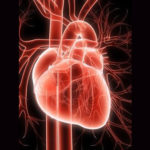By Ben Fuchs | Pharmacist Ben
With 64 million Americans suffering some form of heart disease and over a million deaths attributed annually to what is the number one cause of mortality in the U.S., there is perhaps no health issue that is more worthy of discussion then how to keep your heart healthily humming.
We’ve been talking about nutritional supplements for improving heart health on The Bright Side and indeed there are lots. In fact, even more important than the specific nutrients and dietary routes you can take to your help your ticker, is the very idea that if you have heart health issues and you’re on a prescription drug and you want to get off of it, there are many, many non-toxic, non-pharmaceutical options you can use that restore cardiac vigor and at the same time contribute many other health benefits.  In a later post, we’ll list the top nutritional and dietary strategies for improving cardiovascular health. In this article we’d like to begin to clear up some of the confusion that surrounds the names and descriptions of the various forms of heart disease.
In a later post, we’ll list the top nutritional and dietary strategies for improving cardiovascular health. In this article we’d like to begin to clear up some of the confusion that surrounds the names and descriptions of the various forms of heart disease.
Atherosclerosis (arteriosclerosis) – “sclerosis” is the Greek-derived medical term for “hardening”, thus athero- or arterio-sclerosis refers to hardening and thickening of arterial walls (also known as “hardening of the arteries”). This can ultimately lead to a blockage of blood supply and oxygen, and subsequent to damage to heart cells. The ultimate fate of long term blood and oxygen deprivation can be heart disease, strokes, and heart attacks. The biggest problem associated with prevention of arteriosclerosis is its asymptomatic nature. Unfortunately many people do not know that there coronary arteries are hardening until they suffer from one of the unfortunate end results.
Angina – literally form the Latin for chest pain, this unfortunate condition affects an estimated 10 million Americans. Symptoms of angina are similar to those of a heart attack and include chest pain and pressure, nausea, sweating, dizziness, difficulty breathing and throat, upper back, shoulder or jaw pain. Unlike a heart attack however the symptoms are temporary and usually subside with rest. Still, angina symptoms are a serious sign of cardiac deficiency and need to be addressed immediately.
Myocardial Ischemia (MI) – refers to a lack of blood flow to the heart. Myocardial means “heart muscle” and ischemia is the Greek term for “stopping blood”. The most likely cause of is arteriosclerosis and the end result of long-term blockage can be permanent damage to the heart muscle. A sudden, severe ischemia will often result in a heart attack.
Cardiomyopathy– literally, heart muscle disease, this is a generic term that describes a diseased heart muscle and results in a diminished pumping action. This typically refers to a weakened left ventricle, which is responsible for the ejection of freshly oxygenated blood through the aorta to the rest of the body.
Myocardial Infarction (MI) – colloquially referred to as a “heart attack”, an MI occurs after a section he heart has been deprived of blood long enough for heart cells and ultimately heart tissue to begin to die. Symptoms like chest pain and pressure can resemble those of angina except unlike angina rest does not bring relief. Interestingly, although there are 1 million heart attacks that occur every year in the U.S, it is estimated that another 200,000 occur unrecognized because they have no symptoms. These so called “silent heart attacks” occur most commonly in diabetics.
Arrhythmia – when the normal pacing (rhythm) of heart beats is disturbed, and the heart beats either too fast (“tachycardia”) or too slow (“bradycardia”), the abnormal pacing of
heartbeats is called an arrhythmia. These can be caused by non-heart conditions like lack of sleep, too much caffeine, and fever or thyroid disease. If it is related to cardiac pathology the cause can be an electrical malfunction or disturbance in the heart’s blood supply caused by fatty deposits and plaques. Symptoms of cardiac arrhythmias include palpitations, shortness of breath, dizziness, panic sensations and chest discomfort.
Heart Failure (HF) – while still pumping normally during HF, the heart’s blood supply begins to slow down and either it’s structure or size begin to change. There may be no dangerous symptoms as the heart begins to fail but gradually signs like fatigue and difficulty exercising (which may be attributed incorrectly to normal aging) eventually will begin to show up.
Congestive Heart Failure (CHF) – As heart failure progresses, eventually blood is not pumped into or out of its chambers and fluid begins to accumulate and “congest” the lungs and heart. The lungs can become stiff resulting in constant fatigue, weakness and shortness of breath. Swelling in the extremities is a common occurrence with CHF. Sometimes, a CHF suffererer will
awaken from sleep with sensations of breathlessness, coughing or wheezing. Neck veins may be swollen and occasionally there is indigestion, a feeling of fullness or a lack of appetite. According to the Texas Heart Institute, people over 40 have a 1 in 5 chance of developing Congestive Heart Failure in their lifetime.












